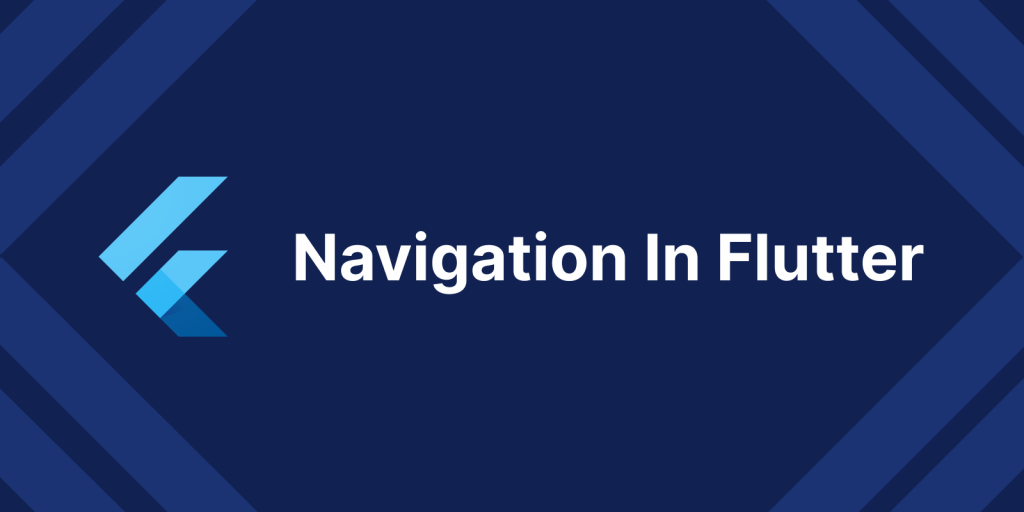
Most applications have multiple screens that display different types of information. For example, an application might have a screen thatdisplays elements. When the user clicks on a product image, a new screen opens displaying detailed information about the product.
Navigation is a fundamental aspect of mobile app development. In Flutter, navigating between different screens or pages is made easy by a variety of packages and libraries. One such package that has gained popularity for its flexibility and ease of use is go router.
In this blog, we’ll take a closer look at the go_router package, how it simplifies navigation in Flutter apps, and why you might want to consider using it in your next project.
You may also check our Flutter app development services.
What is go_router?
go_router is a powerful and flexible routing package for Flutter that simplifies the navigation process in your app. It offers an alternative to Flutter’s built-in Navigator, making it easier to manage routes, transitions, and deep linking. The package is designed to be developer-friendly, customizable, and feature-rich.
Key Features
- Declarative Routing: One of the standout features of
go routeris its support for declarative routing. Instead of managing your routes imperatively, you can define your routes in a structured and easy-to-understand format. This is particularly beneficial for large and complex apps with many routes. - Customizable Transitions:
go routerprovides a wide range of transition options, allowing you to create custom page transitions and animations to enhance the user experience. You can use built-in transitions or create your own. - Deep Linking: Deep linking is crucial for many apps, and
go routermakes it easy to handle deep links, allowing you to navigate to specific pages within your app based on URLs. - Route Guards: The package offers route guards that let you control access to certain routes. This is useful for implementing authentication checks or other conditions before allowing users to navigate to specific screens.
- Dynamic Routing: You can dynamically generate routes based on runtime conditions. This is particularly useful when dealing with data-driven apps where the list of available routes can change.
Getting Started with go_router
To start using go_router, you need to add it to your Flutter project by including it in your pubspec.yaml file. Here’s an example of how to do that:

Once you’ve added the package, you can define your routes and navigate between them with ease. Here’s a basic example of how to set up a few routes:
|
1 2 3 4 5 6 7 8 9 10 11 12 13 14 15 16 17 18 19 20 21 22 23 24 25 26 27 28 29 30 31 32 33 34 35 36 37 |
final router = GoRouter( initialLocation: '/home', navigatorKey: navigatorKey, builder: (BuildContext context, NavigationRequest request) { return Scaffold( appBar: AppBar( title: Text('My App'), ), body: request.pageBuilder(context), ); }, navigatorObservers: <NavigatorObserver>[ MyObserver(), ], initialPageBuilder: (_) { return MaterialPage<void>( key: ValueKey<String>('/home'), child: HomeScreen(), ); }, navigatorKey: navigatorKey, navigator: navigator, initialName: 'home', initialChildren: <RouterPage>[ // Define your routes here MaterialPage<void>( key: ValueKey<String>('/home'), child: HomeScreen(), ), MaterialPage<void>( key: ValueKey<String>('/details'), child: DetailsScreen(), ), ], ); |
This is just a basic example, and go_router provides many more options for customizing your routing experience, such as transitions, deep linking, and route guards.
Advantages of go_router
- Declarative Approach: The declarative approach to routing simplifies the code and makes it more readable, which is especially valuable for larger apps.
- Customization: You have complete control over route transitions and can create eye-catching animations and transitions to enhance the user experience.
- Deep Linking: The built-in deep linking support simplifies handling URLs within your app, which is crucial for user engagement.
- Route Guards: Route guards make it easy to implement security and access control in your app.
- Active Development:
go_routeris actively maintained and has a growing community of users, ensuring that it remains up to date with the latest Flutter developments.
Conclusion
Go Router is one of the best and most useful in Flutter and understanding different routing and routing processes can improve Flutter app development. Incorporate these techniques into your app navigation strategy to create a consistent and engaging user journey. The go_router package is a powerful and flexible routing solution for Flutter that simplifies the process of navigation in your app. You can also check our other blog here.

Be the first to comment.